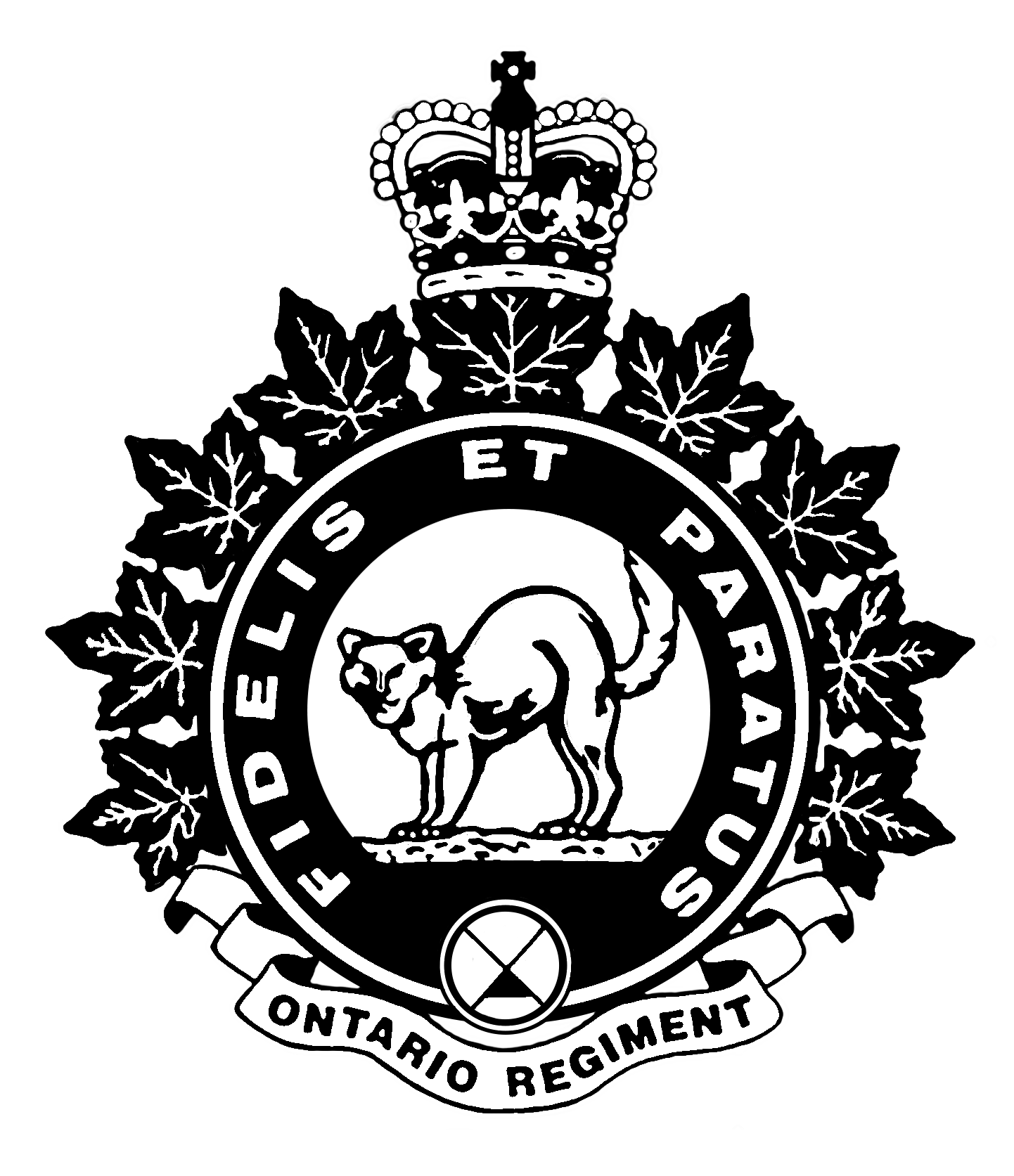For a few years, beginning in 1914, the Ontario Regiment had access to a rifle range in Ontario County. In fact, it was within easy marching distance of the Town of Uxbridge.
Property owner George Kerry sold 75.8 acres to the Crown on 30 March, 1914 for the sum of $1,400. It was located on the north side of Brookdale Road, just south of Uxbridge. The location is here:. The site was alternately called the Uxbridge Rifle Range or the Brookdale Rifle Range.
A 1000-yard rifle range was constructed on the property, with the firing point at the west end and the target area at the east end. The target area included butts, an area protected by earth and concrete, where soldiers are positioned to raise and lower targets and mark hits on the target with an indication pointer. A log cabin was constructed as an officers’ shelter, near the firing point.
The ranges opened with a ceremony on 7 September, 1914. Mayor Lyman Nicholls and others made short speeches and then the ranges were open for shooting. There were separate shooting contests for each of the Civilian Rifle Club, Uxbridge Cadet Corps and the 34th Ontario Regiment. The top shooter from the Regiment was Captain Henry Cooke, the Regimental Signaling Officer. The 10 September, 1914 edition of the Uxbridge Journal described the ranges as “…built with all up-to-date appliances and afford a means of training to all who desire to learn the art of shooting.”
The First World War had erupted only a month before the opening of the rifle range and, as part of the British Empire, Canada found itself at war. The 116th Battalion was recruited in Ontario County and was immediately followed by the 182nd Battalion. Despite the close proximity of the Uxbridge Rifle Range to Battalion Headquarters and “A” Company in Uxbridge, there is only circumstantial evidence of the 116th Battalion using the range. It would appear that the 182 nd Battalion never used the range.
The Militia was slow to get organized after the First World War and budgets were low. Traditional summer training camps had been up to two weeks in duration before the war, but similar camps did not reappear until the latter half of the 1920s. Until that time, Militia regiments were only able to conduct short camps at a local training area. Fortunately for the Ontario Regiment, the Uxbridge Rifle Range was available.
The Ontarios’ summer camp was held at the range in 1923, 1924 and 1925. Each camp was structured similarly. The camps were three days in duration, beginning on the Friday evening of the Labour Day weekend. An advance party arrived on Friday morning to erect tents and get the site in order. Trucks were secured to bring the main body of soldiers to camp. The soldiers fired rifles on the range for most of Saturday. On Sunday the Regiment marched into Uxbridge to attend church service. In the afternoon the Regimental band played for camp visitors. A limited tactical exercise was squeezed into the schedule. The soldiers returned home on the Monday.
The brigade-level camps returned in 1926 and for the next few years were held at Long Branch and Niagara. Reduced Militia budgets due to the Depression brought the Ontarios back to Uxbridge for the 1931 and 1933 camps, which were held over the August Civic Holiday weekend. Rifle firing was replaced by sports events and there was more emphasis on tactical training. No rifle firing was permitted due to the increased danger to two homes nearby and the adjacent roads. Both Lakeridge Road and Reach Road (modern names) ran behind the butts, thus putting them in potential range of bullets. A site visit was conducted in 1928 and the resulting report indicated that it would cost $20,000 (about $334,500 in 2023
dollars) to make the ranges safe for firing. This was a prohibitive sum given the budgets of that era and as a result, live firing was banned.
The rifle range was used for the Regiment’s annual sports day from 1934 to 1936. The events pitted the Regiment’s various companies against each other in track and field, softball, soccer and tug-of-war. Each event was scored with points and the company gaining the most points over the day was declared the winner and presented with a silver cup. Friends and family members were encouraged to attend.
By the late 1930s the property was declared as unsuitable for military use. It was transferred to the Department of Mines & Resources in 1940, which put the land up for sale. Soon after, the property was sold to private citizens. The area has been reforested by subsequent owners, but a 1994 Uxbridge Times-Journal article indicated that the log cabin and butts were still intact.
Rod Henderson
Rod Henderson is the Regimental Historian of the Ontario Regiment. He served as a Sergeant in the Regiment and is the author of “Fidelis Et Paratus: The History of The Ontario Regiment RCAC”.


